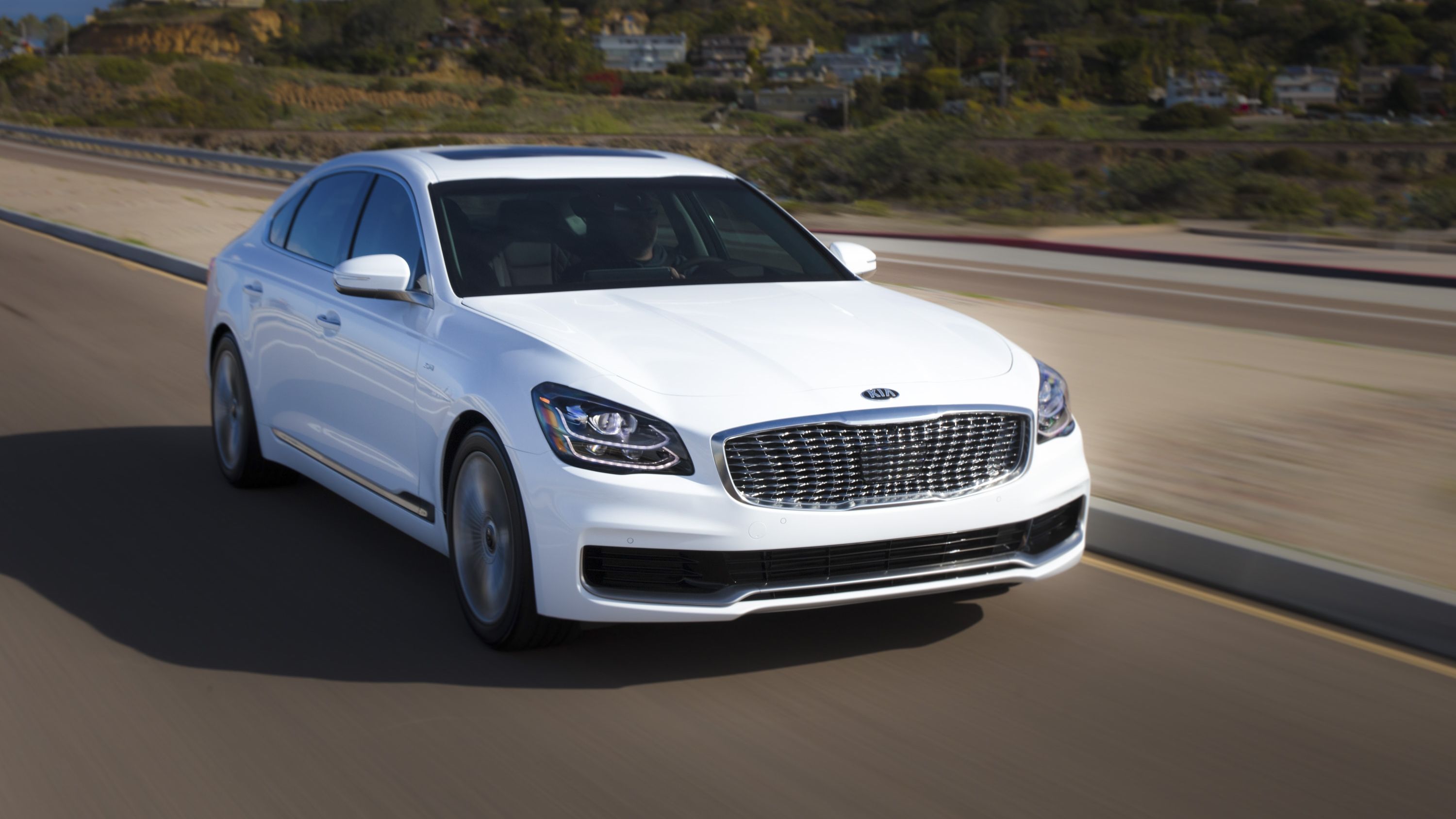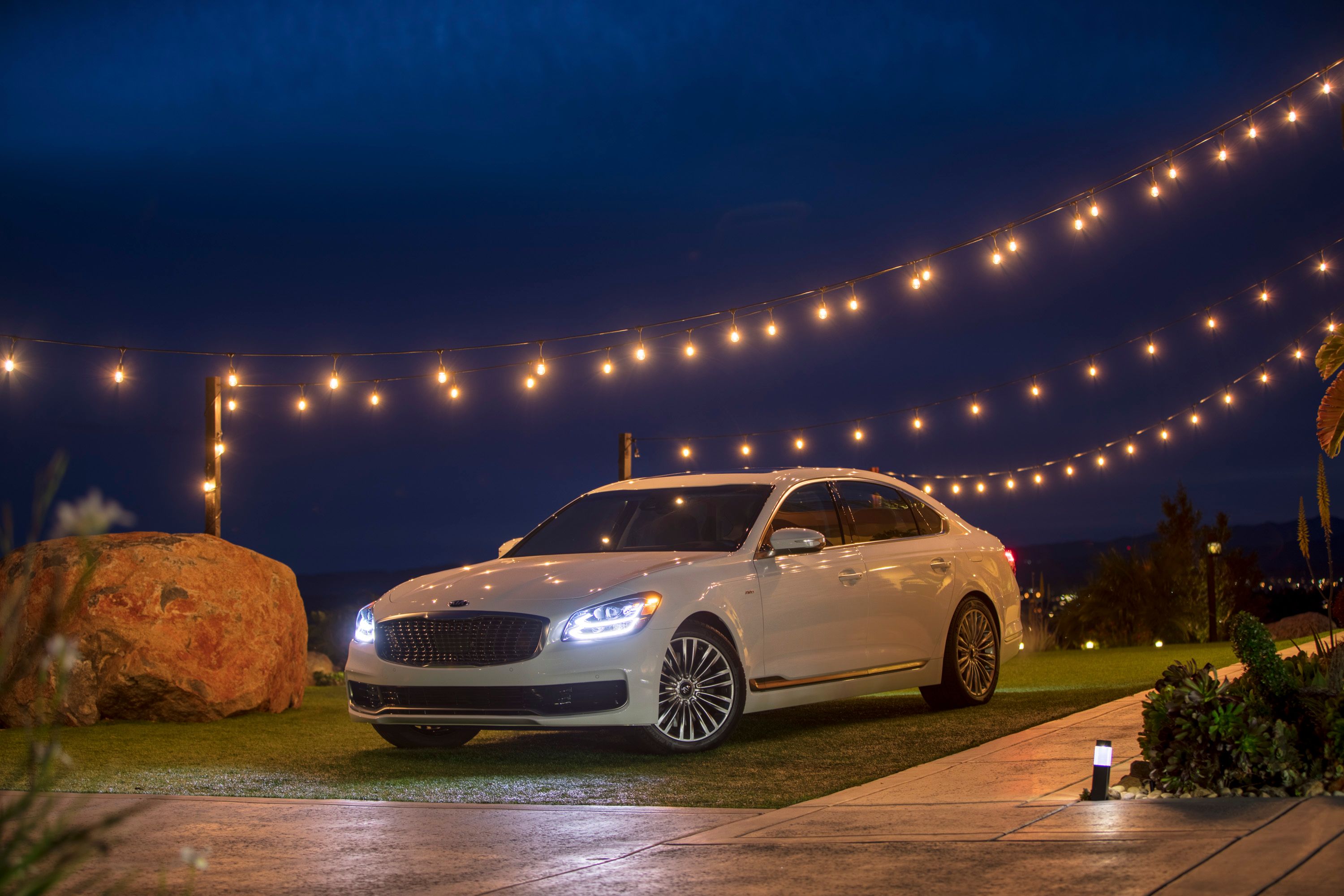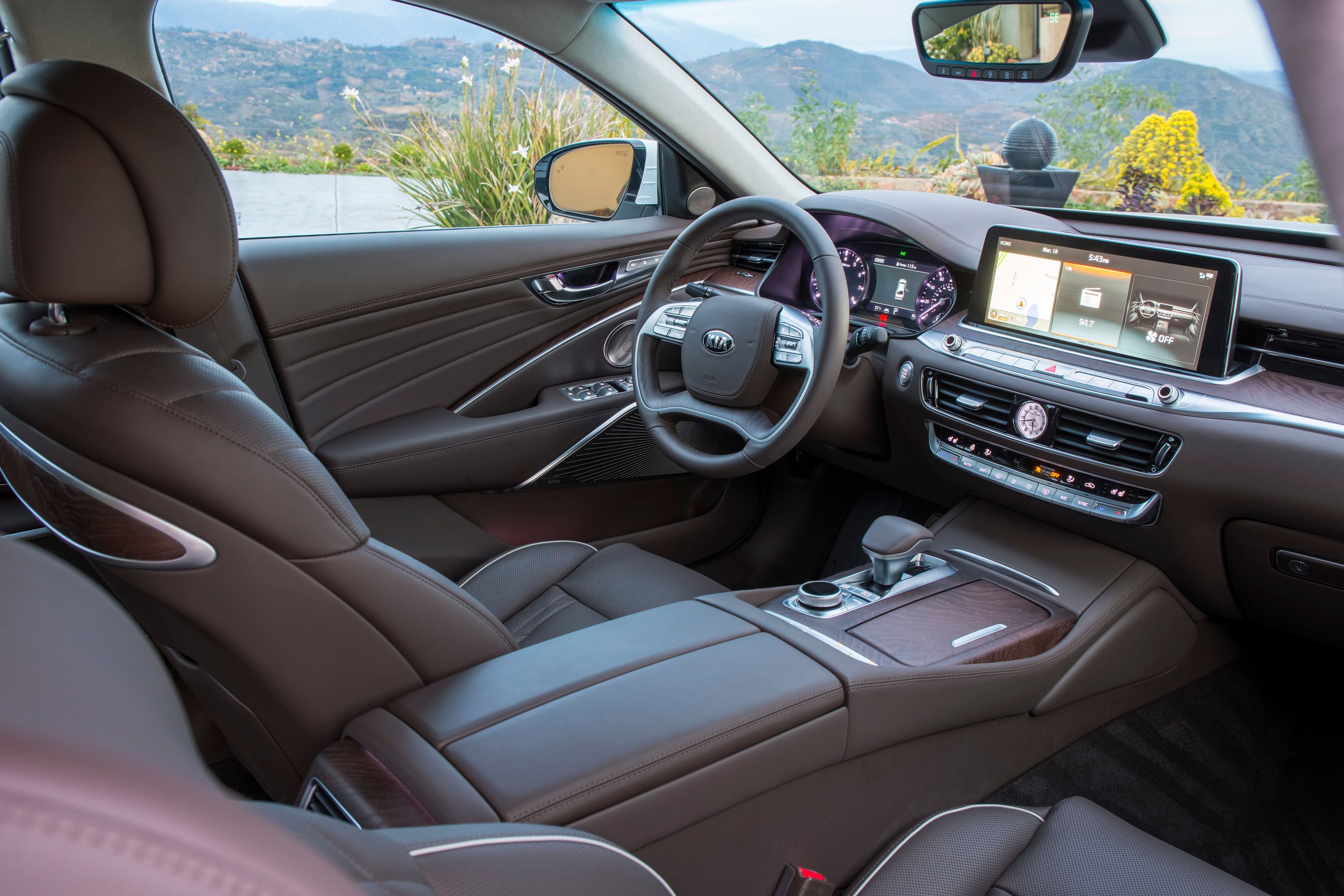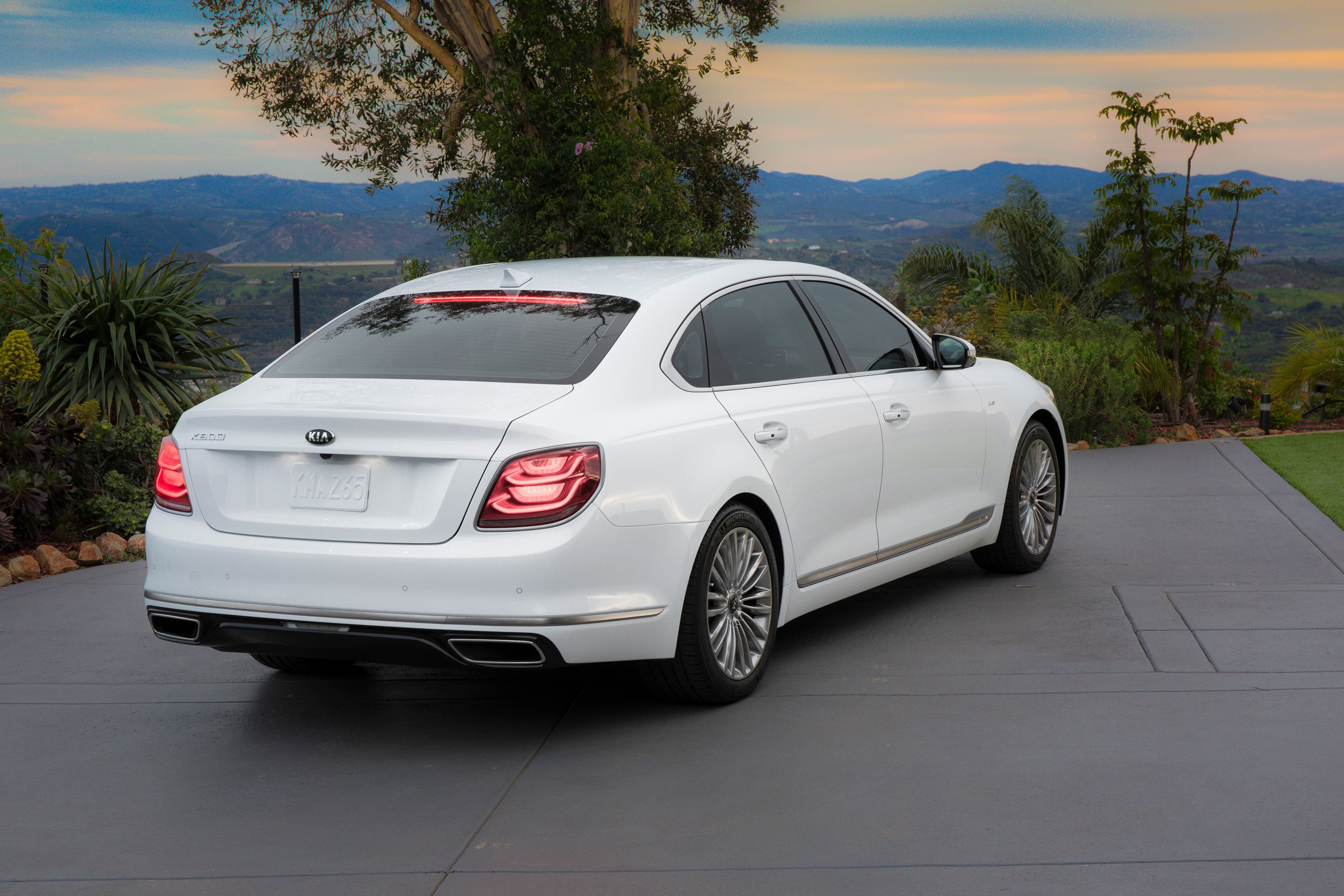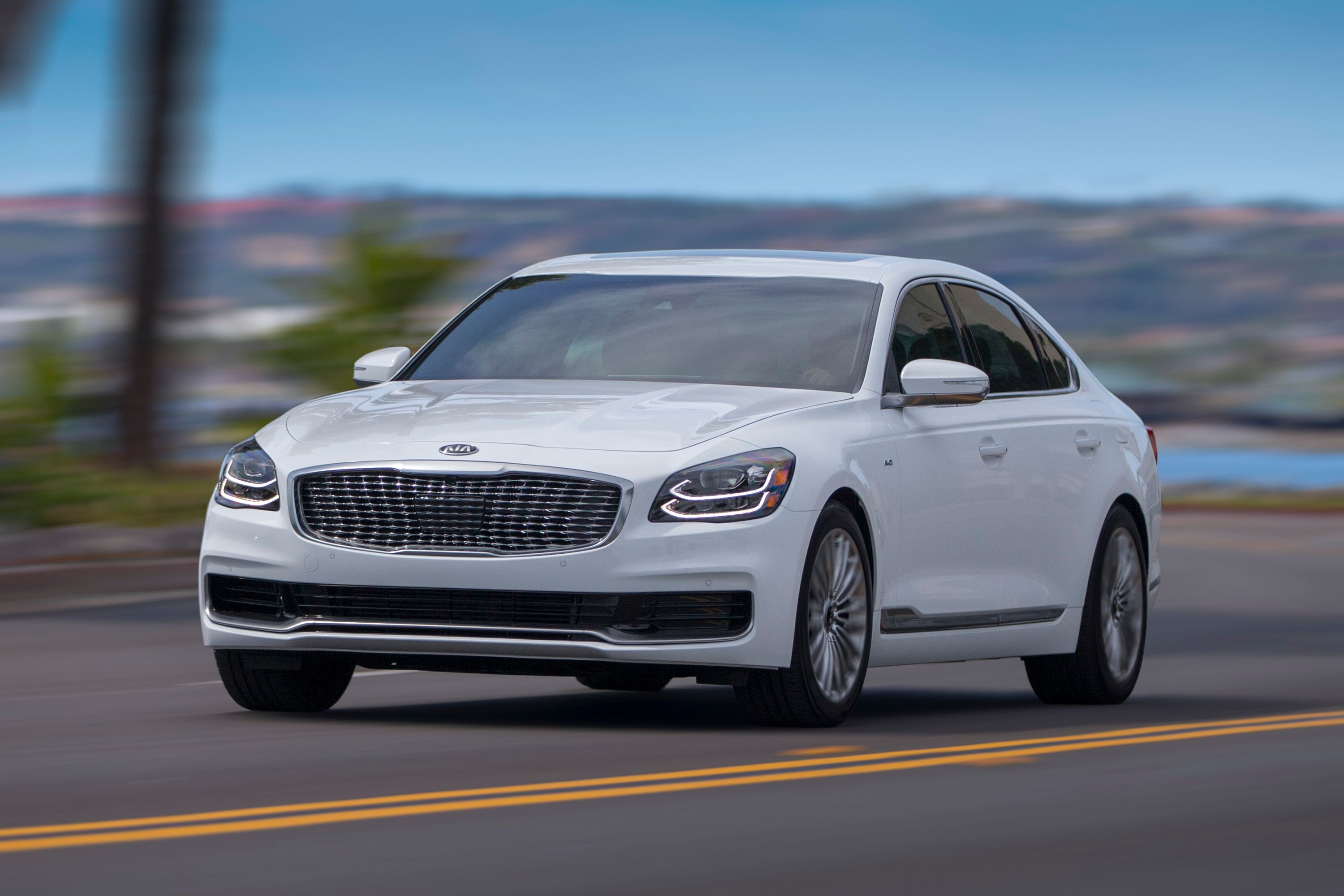Once known for affordable and not-so-great vehicles for emerging markets, Kia has developed into a full-blown automaker that covers many segments in the world's most important markets. In recent years, Kia also took a couple of big steps into the premium market by upping the ante in the fit-and-finish department and by offering increasingly better equipment lines. In 2013, Kia decided to join the full-size luxury market with the K900, which was just redesigned into the second generation. Unveiled at the 2018 New York Motor Show, the new K900 boasts improvements in just about any department and looks the part even when compared to German competitors like the Mercedes-Benz S-Class and BMW 7 Series.
Designed with familiar Kia styling elements and a series of new features, the K900 looks bold, modern, a more upscale than ever. It also has a unique appearance thanks to the new "tiger nose" grille with jewel-like cells and the new headlamps with U-shaped LED lights. The profile is much cleaner and sets the K900 further apart from the current "muscular look" trends that captured the full-size segment. But while somewhat subdued, the profile gains sportier accents toward the rear thanks to the inclined D-pillar and the fastback-style decklid section. Around back, smaller taillights replaced the previous two-piece units, while the chrome trim seen on the outgoing model was removed. The big exhaust pipes and the diffuser-like element below keeps things exciting in contrast with the clean upper fascia.
Praised for its unbeatable bang for the buck, even when compared to the German sedans, the previous K900 interior gained a comprehensive update that makes it look more modern and stylish. Nearly every surface is trimmed in soft materials, including leather and Alcantara, joined by metal veneer and a choice of open pore wood selection, including walnut and ash. The two-tone leather upholstery option adds even more style. The well-contoured seats provide optimum support, while the optional premium Nappa leather will make the passenger feel as comfortable as in a BMW 7 Series.
Conceived beyond a driver's car, the K900 offers enhanced comfort in the rear seats too. The driver side rear seat and the passenger side rear seat offer available 12-way and 14-way adjusters, respectively, as well as reclining capability, height-adjustable headrests and forward/aft, tilt up/down cushions. The infotainment display now measures 12.3 inches, just like in the German cars. The standard instrument cluster is smaller, but the optional unit has the same diagonal, putting the K900 on par with the Mercedes-Benz S-Class. An analog clock specially designed by Maurice Lacroix and placed on the center stack is a sign that Kia has big plans in this niche.
The sedan is also packed with the latest driver assist technology, with the long list of standard and optional features including Surround View Monitor, Blind Spot Monitor, Lane Keep Assist System, Forward Collision Avoidance Assist, Driver Attention Warning, Rear Cross Traffic Avoidance Alert, Lane Follow Assist, and Advanced Smart Cruise Control.
Power is provided by the same 3.3-liter V-6 engine offered in the Kia Stinger. The unit is rated at 365 horsepower and 376 pound-feet. That's a 69-horsepower and 119-pound-foot increase over the previous model. No word on the whether the U.S. model will also get the 3.8-liter V-6 and the 5.0-liter V-8 in the U.S., but the latter is mandatory if Kia wants to compete with the range-topping versions of the S-Class and 7 Series.
Pricing information is not yet available, but expect the K900 to cost less than the competition. Stay tuned for a full review of the luxury sedan.
References
Kia K900
Read our full review on the 2019 Kia K900.
Read our full review on the current 2017 Kia K900.
Read more New York Auto Show news.
Read more Kia news.

